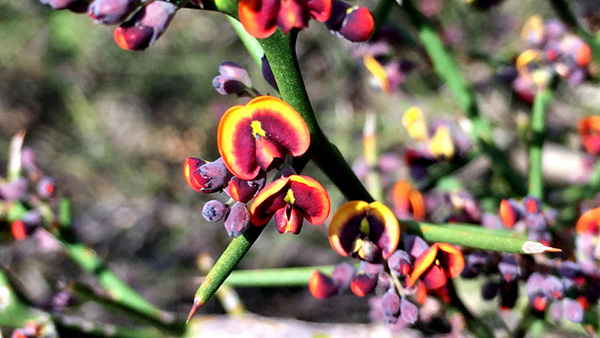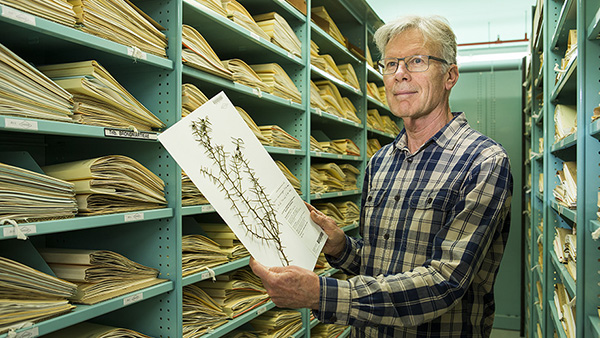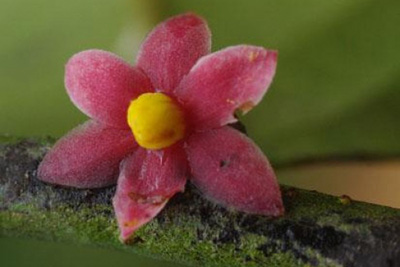Earlier in the year, Australian National University’s Emeritus Prof. Mike Crisp made headlines, when he named two new species of Daviesia (egg and bacon peas) after Danny DeVito and Arnold Schwarzenegger.
The monograph, published in the journal Phytotaxa, is the culmination of over 40 years of research into the genus. It is the first comprehensive account since Bentham‘s treatment in Flora Australiensis (1864), which included 55 species. Crisp and co-authors now recognise 131 species and several subspecies.
Among the newly described species that occur in South Australia are Daviesia schwarzenegger and D. devito. These have now been added to the South Australian Census of plants, algae & fungi.
While variation with in Daviesia was known for a long time, only modern DNA sequence analyses made the recognition of the two taxa possible, by showing that D. benthamii subsp. humilis comprised two cryptic species that are more closely related to other species than to D. benthamii. The two species were named after the actors, as they are “unlikely twins“, similar to the two characters Schwarzenegger and DeVito play in the movie Twins (1988).

Daviesia Schwarzenegger occurs from the “southern Flinders Ranges in South Australia, through northern Victoria and as far north as Condoblin in New South Wales”. Photo: M. Crisp.
Daviesia schwarzenegger is also named after Arnold Schwarzenegger, in recognition of his “leadership (as governor of California) in pioneering the reduction of carbon emissions, and for advising the Australian government to do the same“. It is the larger and more robust of the two species, whereas D. devito “is the less vigorous of the two cryptic species“.
Watch Mike Crisp talking about the new taxa in this video.
Plants are often named after persons, for example the collector of plant specimens, an explorer or important naturalist. While early botanists also named species after benefactors or royalty, in modern times, celebrities and politicians have been used. Recent examples include:
- The lichen Caloplaca obamae after Barak Obama
- the lichen Japewiella dollypartoniana after Dolly Parton
- the fern genus Gaga after Lady Gaga (2.6mb PDF)
- Sir David Attenborough is honoured by three plant species (Nepenthes attenboroughii, Hieracium attenboroughianum, Blakea attenboroughii) and the genus Sirdavidia.


